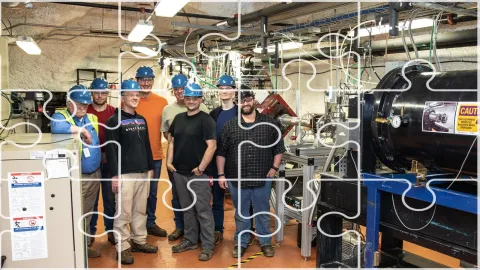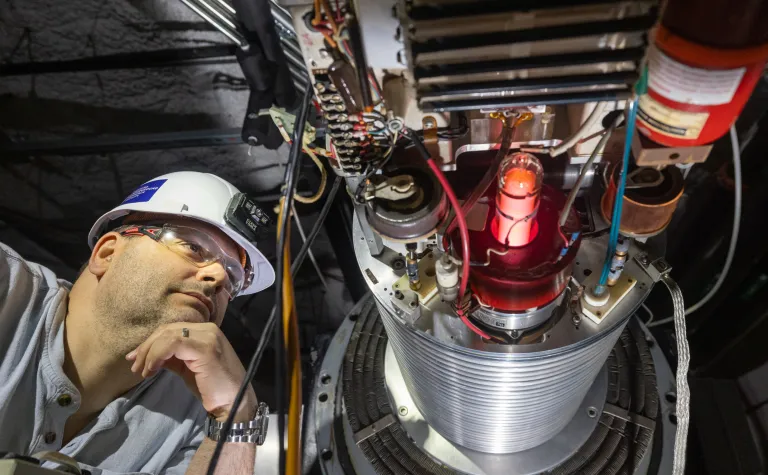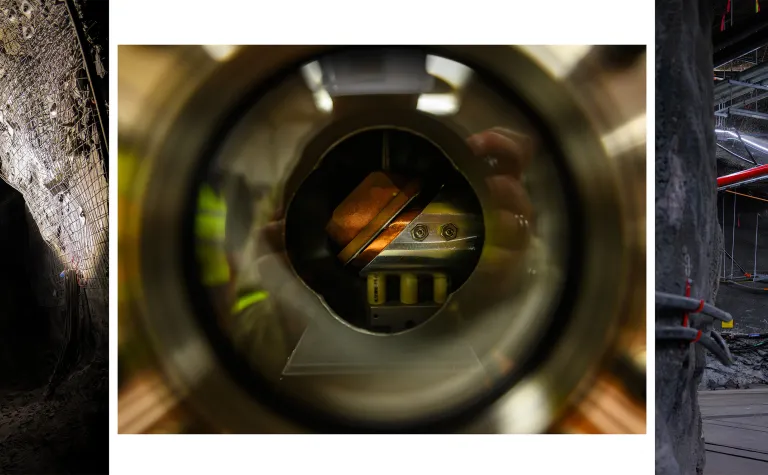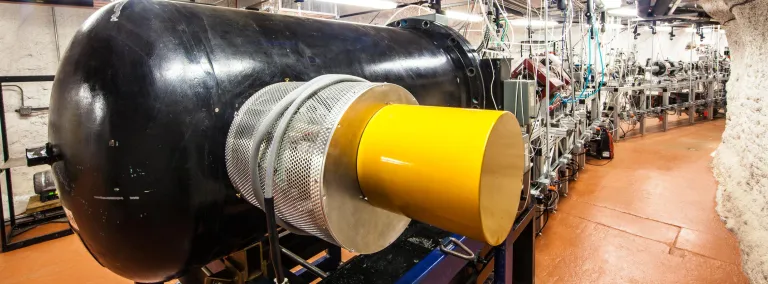
Present
CASPAR
“We are made of star stuff.”
While that statement may sound like a song title from the 1960s, it was actually made by astrophysicist and science fiction author Carl Sagan. And he was right. The nuclear burning inside collapsing stars produces the elements that make up and sustain life on Earth: carbon, nitrogen, iron and calcium, to name a few. Even lead, gold and the rock beneath our feet come from stars.
The Compact Accelerator System for Performing Astrophysical Research (CASPAR) collaboration uses a low-energy accelerator to better understand how elements are produced in the Universe and at what rate and how much energy is produced during the process.
Unlike other underground experiments, we look at many different interactions and are not focused on discovering just one event. All of these details give us a better understanding of the life of a star and what material is kicked out into the Universe during explosive stellar events.
Studying the stars from underground
Although it may seem counter-intuitive, going nearly a mile underground at Sanford Lab gives the CASPAR team a perfect place to study those stellar environments. CASPAR is one of just two underground accelerators in the world studying stellar environments. The other is the Laboratory for Underground Nuclear Astrophysics (LUNA), which is located at Gran Sasso National Laboratory in Italy and has been in existence for 25 years. Frank Strieder, principal investigator for the project and an associate professor of physics at South Dakota Mines, worked on that experiment for 22 years.
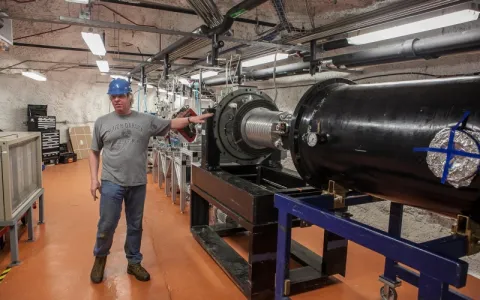
“With our accelerator, we can cover a larger energy range than previous underground experiments." Strieder said.
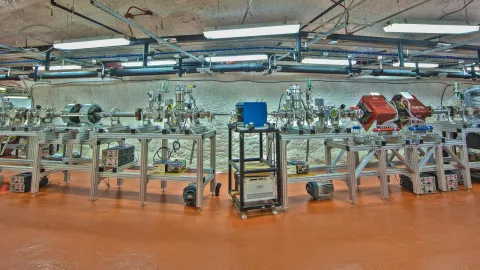
The accelerator
The most famous particle accelerator in the world is the 17-mile long Large Hadron Collider, located in Switzerland and France, which generates up to 7 trillion volts as it hurls particles toward each other at nearly the speed of light. CASPAR, on the other hand, is a 50-foot long system that includes a Van de Graaff accelerator that uses radio-frequency energy to accelerate a beam of protons or alpha particles toward a target of up to 1.1 million volts.
A cool fact about this accelerator? It’s 70 years old and was repurposed for use with CASPAR.
The target
Every reaction the CASPAR team investigates, requires two elements to interact—a projectile and a target. The target material varies according to the interaction they want to study and could include anything from nitrogen and carbon up to magnesium. These elements are usually stored on a heavier backing material for stability, which are kept extremely cold.
The target is hit with a proton beam or alpha beam generated in the accelerator. The power the beam dissipates in the target is up to 100 watts, about the same power as a good light bulb.
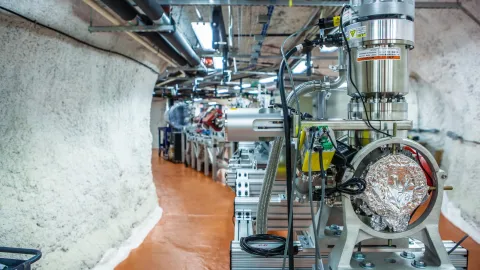
What’s LIGO got to do with it?
In late 2017, the Laser-Interferometer Gravitational Wave Observatory (LIGO), recorded a violent collision of two neutron stars—this was on top of two previous observations of black hole mergers that emitted gravitational waves. Observations made after the collision reinforce the need for measurements like those CASPAR hopes to take, explained Strieder.
“The basic point is that from the information we learned from this cataclysmic event, we can calculate the amount of heavy element material produced.” Strieder said. “And then compare it with the heavy elements found in our planetary system.”
1,100,000
Volts of energy generated by CASPAR
7,700,000,000
Volts of energy generated by LHC
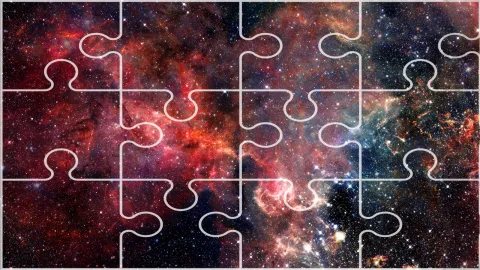
Collecting data
In July 2017, CASPAR achieved first beam and began full operations earlier this year. The accelerator runs for several days at a time, collecting data using a germanium detector and recording the number of reactions that occur per time period. The look at the energy the interacting particle had prior to striking the target, then at the measurement of radiation and particles emitted during the interaction. This can be extrapolated to events in a star and scaled up for the star's massive size.
A lofty goal
The end goal for the field of nuclear astrophysics is to complete the puzzle of how everything is made in the Universe and the locations and processes that govern such production. The experiments studying stellar processes are looking at singular puzzle pieces without knowing what the complete picture is.
“Only as we understand how these pieces fit can we begin to put the whole puzzle together,” Robertson said.
